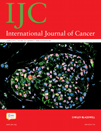Global estimates of cancer prevalence for 27 sites in the adult population in 2008
Abstract
Recent estimates of global cancer incidence and survival were used to update previous figures of limited duration prevalence to the year 2008. The number of patients with cancer diagnosed between 2004 and 2008 who were still alive at the end of 2008 in the adult population is described by world region, country and the human development index. The 5-year global cancer prevalence is estimated to be 28.8 million in 2008. Close to half of the prevalence burden is in areas of very high human development that comprise only one-sixth of the world's population. Breast cancer continues to be the most prevalent cancer in the vast majority of countries globally; cervix cancer is the most prevalent cancer in much of Sub-Saharan Africa and Southern Asia and prostate cancer dominates in North America, Oceania and Northern and Western Europe. Stomach cancer is the most prevalent cancer in Eastern Asia (including China); oral cancer ranks as the most prevalent cancer in Indian men and Kaposi sarcoma has the highest 5-year prevalence among men in 11 countries in Sub-Saharan Africa. The methods used to estimate point prevalence appears to give reasonable results at the global level. The figures highlight the need for long-term care targeted at managing patients with certain very frequently diagnosed cancer forms. To be of greater relevance to cancer planning, the estimation of other time-based measures of global prevalence is warranted.




